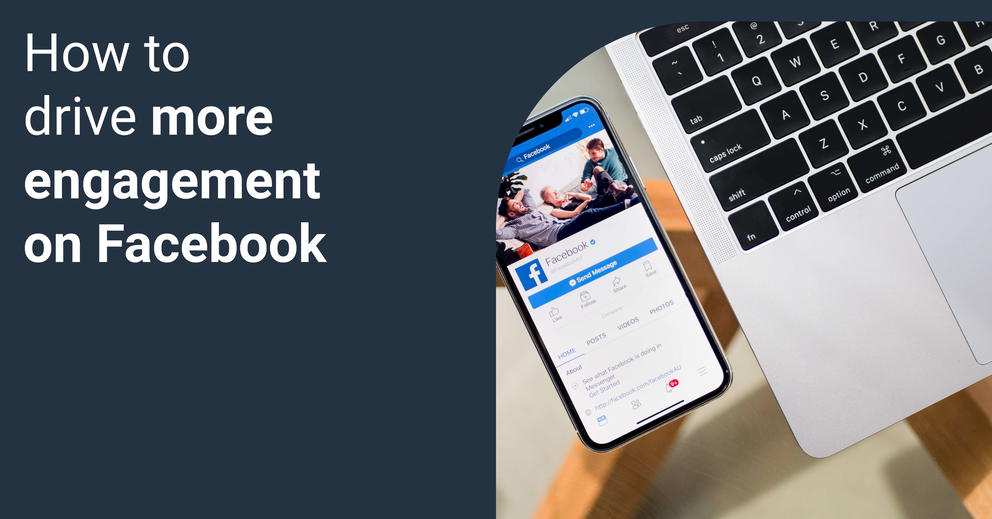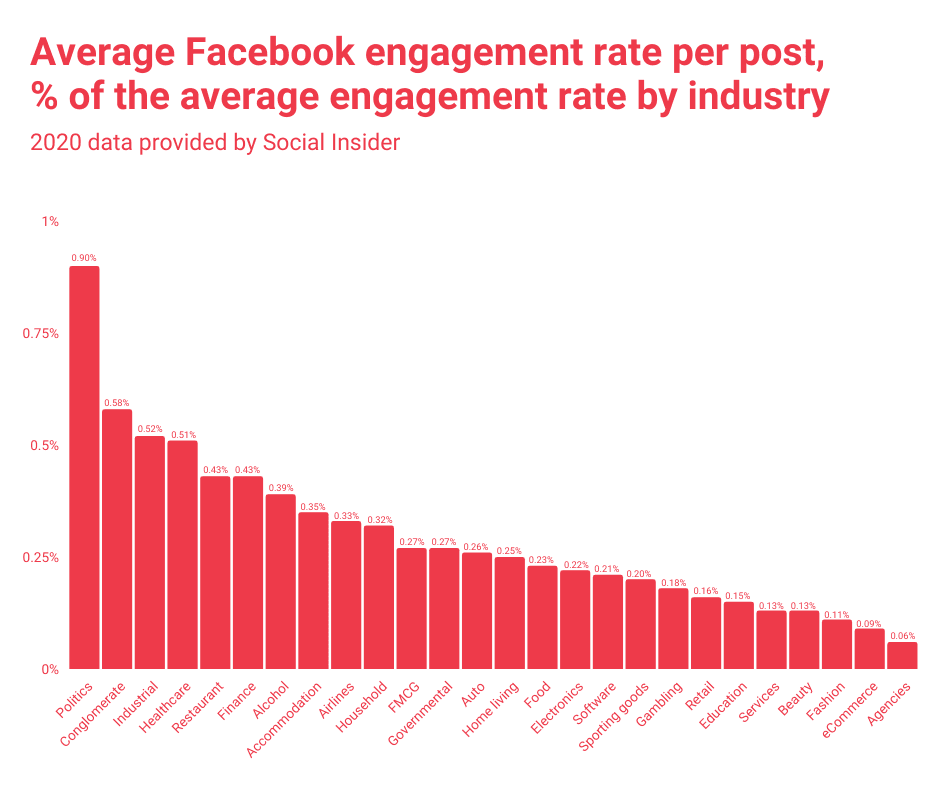All You Need To Know About Facebook Engagement Ads
Almost 2 million daily active users worldwide spend about an hour a day using Facebook and its pilot apps — Messenger and Instagram. Marketers are giving more attention to Facebook engagement ads as it’s a powerful tool to skyrocket brand awareness.

Jul 22 2021●7 min read

The average Facebook user is clicking on around 11 ads in a month. However, not every advertiser sees the results right after launching the campaign, and others are ditching Facebook engagement ads as they did not deliver any groundbreaking results. The truth is that the ad campaign lies much deeper than just launching a targeted campaign. So, the question is — how to create the ad that performs and delivers?
What are Facebook Engagement Ads?
Facebook engagement ads, also known as page post engagement (PPE) ads, allow companies to share the message with more people beyond their Facebook page and business followers’ news feeds. In general, businesses are paying for post engagement rather than the reach. When launching a PPE, Facebook will show the ad to the audience they think are most likely to engage.
However, page post engagement ads are not the same as boosted posts. Boosting a post turns an organic post into an advertisement whose task is to reach a broader audience. Advertisers use PPE ads to pay for an actual engagement with the ad rather than generated reach.
Facebook engagement ads vs. other ad objectives
Facebook allows advertisers to choose an exact objective they want to achieve with the ad. Currently, the social media giant is offering three main objectives and various sub-objectives within:
- The awareness objectives (brand awareness and reach sub-objectives) are aimed to generate interest in your brand’s products or services.
- Consideration goals for your ad, including sub-objectives — traffic, engagement, app installs, video views, leads and messages generation. This is mostly used to run the ad to users interested in the business’s products or services and who might want more information or visit a landing page.
- Conversion, including the objectives such as catalog sales and store traffic, are used to give a final push for the people who are most likely to make a conversion, which the business is aiming to achieve with the ad, for example, a product purchase or a registration on the website.
If the business goal is to gain more brand awareness in social media, the Facebook Ad created with a Consideration objective and engagement milestone will deliver the best results. Running a targeted PPE campaign will deliver the ad to the users, who will find your content relevant.
Facebook engagement ads will also help to boost proof and reach in the social media landscape. The more people will engage with your content, the more it will encourage others to do the same. It’s pretty similar to viral posts. The wider the message is spreading around the media, the more results it is going to generate. It might deliver even deliver the results better than you’ve expected and paid for.
The average Facebook post engagement rate
The study conducted by Social Insider shared insights on how Facebook users interact with the content published by businesses. Depending on the niche the company is operating in, some are having higher engagement rates than others:

The median average engagement rate through all of the industries is 0.27%. Politics average post engagement rate is skyrocketing because it provokes feelings and reactions from various audiences, sometimes even hate speeches addressed to politicians. The study also showed that politics have nearly doubled their average engagement rate compared to the 2019 period, 0.52%.
Although during the pandemic, fashion and eCommerce industries have increased their sales, the engagement rate decreased. Mostly because of the algorithms Facebook has implemented. The more traffic the businesses are getting outside of the Facebook-operated landscape, the lower the engagement rate.
How to calculate Facebook post engagement
Advertisers can measure their marketing efforts’ effectiveness in four ways. Each calculation presents a different metric as a success benchmark so that the numbers can be different according to the advertiser’s chosen calculation method.
- Total Engagements / Followers = Engagement Rate. This method measures engagement on a follower basis. The direct audiences to which the brand’s content might be shown. Although it’s the easiest way to get an engagement rate percentage, it does not include non-following users’ interactions with the content.
For follower-based engagement calculation, the rate above 1% is considered good. However, if the posts receive less than 1% engagement continuously, the following base is likely concentrated on mostly inactive users.
- Total Engagements / Reaches = Engagement Rate. This method of calculation measures engagement on a reach basis. The total number of users that the post is exposed to. This calculation does not include impressions count. However, it can also be used to calculate the rate of Facebook engagement ads.
For advertisement engagement calculation, a 1-2% rate is good. At most times, it should reach the benchmark because the ad is being shown to the audience, which might be interested in the product or services. However, it is important to define the business target audience correctly. If the ads receive less than a 0.7% engagement rate on average, we advise redefining the target audience.
- Total Engagements / Impressions = Engagement Rate. The impression-based rate calculates the engagement on a per-view scale. Although this method is useful for measuring the cost per thousand impressions (CPM), the frequency variable can ofter lead to inconsistent calculations.
A good engagement rate calculated by this formula is the same as a good reach-based rate.
- Using Whatagraph for all your calculations. Ditching formulas and calculations have never been so easy. Advertisers can measure their Facebook engagement ads performance by effortlessly connecting their Facebook Ads data to the Whatagraph reporting tool and get a clear view of top-performing posts, average engagement rate, CPM and more. Build a Facebook ads report with the most important metrics from all the marketing channels in just a few clicks. Now you can even move all your Facebook Ads data to Google BigQuery thanks to the data warehouse.
How to improve post engagement
The engagement-focused Facebook ad can be created by using a photo or video material. If the Facebook Ads are not performing well or do not draw the users’ attention, there might be a few solutions, which will help leverage the engagement rate:
- When creating a photo or a video ad, make sure not to cover more than 20% of the placement with text. The visual ad has to be engaging on its own and not cluttered with eye-tiring information. Users scan their feeds quickly, and you need to provide concentrated details about your brand or product in as little text as possible. The social media platform’s algorithms will spot the overused text ad and show the advertisement to fewer users.
- Use good quality visual content. We are in 2021 and Facebook is supporting a 4K video format. The user won’t want to watch 360P video when competitors run Facebook ads with quality content. It is recommended to use vertical video format, as most users are browsing Facebook through their phones and will cover more screen area.
- Provide sounds and captions when running a video ad. Catch the user’s attention with the video sound while scrolling through the newsfeed and provide the captions so that the potential customer can watch the video without sound.
- The Carousel format will help you showcase the product or service in your Facebook ad with multiple images. This is also ideal if you want to present the users with different products your company offers in a single ad.
- Using Call To Actions (CTA). When running Facebook Engagement Ads, the advertiser can choose from multiple CTA buttons, including “Learn More”, which will transfer the user to the website or business’s Facebook page, “Send Message”, “Shop Now”, et cetera.
Bottom line
Although implementing Facebook Ads might seem overwhelming initially, the return on investment (ROI) can be massive. The Facebook engagement ad might not be a success right away but it’s not recommended to throw it off the bat right away.
By running an A/B test on similar ad content, testing different CTAs or visuals and constantly monitoring the performance of the ads, marketers will find their path to success. Facebook is the leading social media platform by the daily users base and advertisers have a big opportunity to leverage the business through it.

WRITTEN BY
Benediktas KazlauskasBenediktas is a detail-oriented writer with a passion for marketing and technology. Using his vast experience in Business Management and Sales, he approaches every blog with the same idea: How to make readers come back for more?